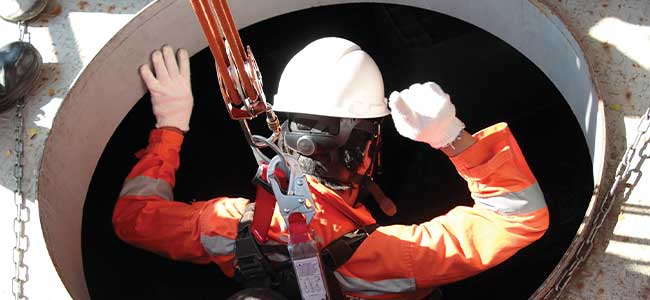
Redefining the Safety Hierarchy in a Confined Space
What are the steps you should first consider to ensure your confined space entries are safe and that workers are best equipped to respond if they are met with a life-threatening hazard?
A lot can happen in four minutes, especially when those four minutes are spent in a confined space. Confined spaces are prone to oxygen displacement, and after just four minutes without oxygen, you can experience brain damage or even die. It should be no surprise, then, that confined spaces are the leading cause of multiple fatalities in the workplace. That’s why it’s so important to take extra precautions to ensure safety in confined spaces.
It’s an age-old horror story: a worker enters a confined space, most likely for routine maintenance or repair, and an atmospheric hazard is present. When the entrant doesn’t respond to the hole watch, their supervisor and peers get worried, so one of them enters the confined space to check on the original entrant only to be overcome by the same gas hazard. Unfortunately, this scenario is too common—The National Institute for Occupational Safety and Health (NIOSH) reports that 60 percent of confined space deaths are among these “would-be” rescuers who enter a confined space without understanding the hazards within.
When workers in confined spaces need your help, you can’t act on impulse – you need to be prepared with a plan and proper equipment in place long before the first worker enters a confined space. When creating a confined space entry plan, however, you need to think bigger than what the “traditional” hazards are to isolate.
While most would say eliminating the hazard completely should be the first step in your safety hierarchy, it’s impossible to completely eradicate every potential hazard workers face. Below are the steps you should first consider putting in place to ensure your confined space entries are safe and that workers are best equipped to respond if they are met with a life-threatening hazard.
Potential Risks in a Confined Space
Because you can’t eliminate every potential hazard, you should first consider your overall approach to confined space entries. Before workers enter a confined space, you must complete a risk assessment (examining the environment in/around the confined space for entry location and size, energy or chemical sources, and lockout points), hazard assessment (examining what hazards workers could be exposed to), identify the personal protective equipment workers will need, and select properly trained workers to perform the job.
After you’ve checked and prepared your equipment, you should sample the atmosphere from a safe location. Once you’ve safely approached the confined space and you’ve begun taking samples, you need to take things like stratification of gases into consideration.
This article originally appeared in the August 1, 2023 issue of Occupational Health & Safety.